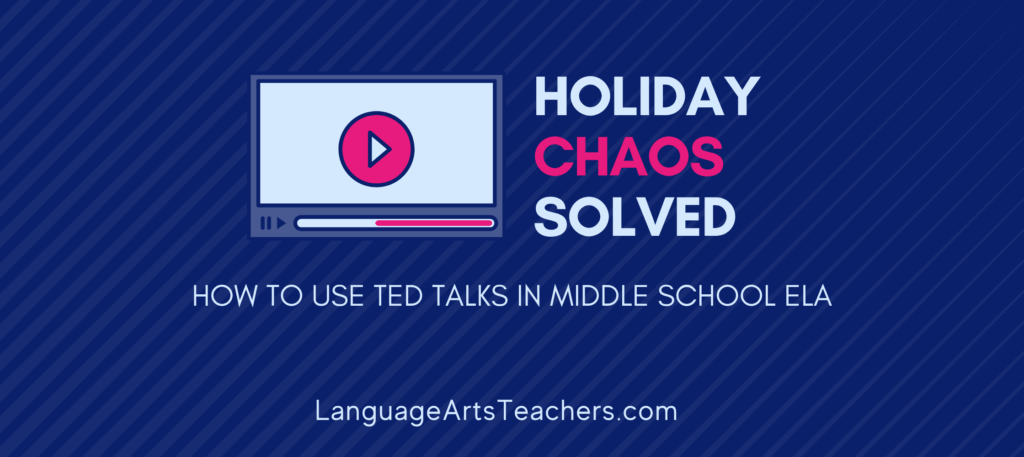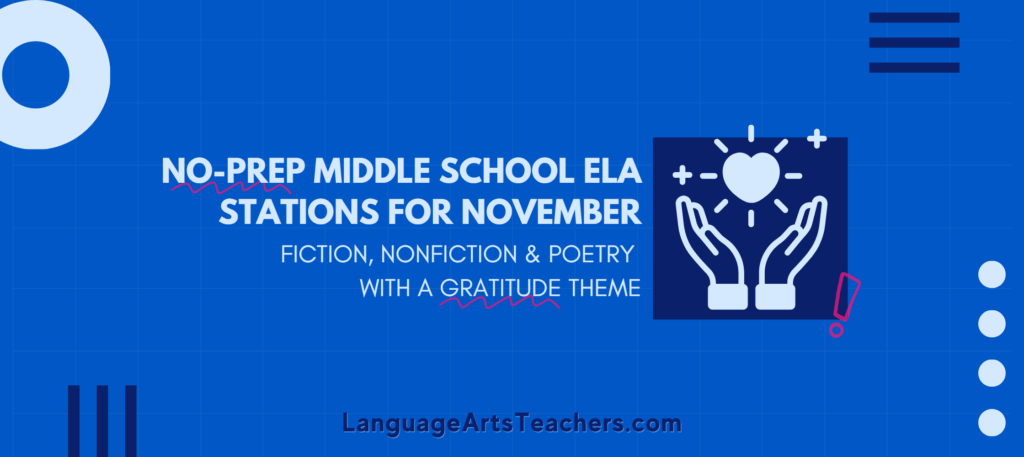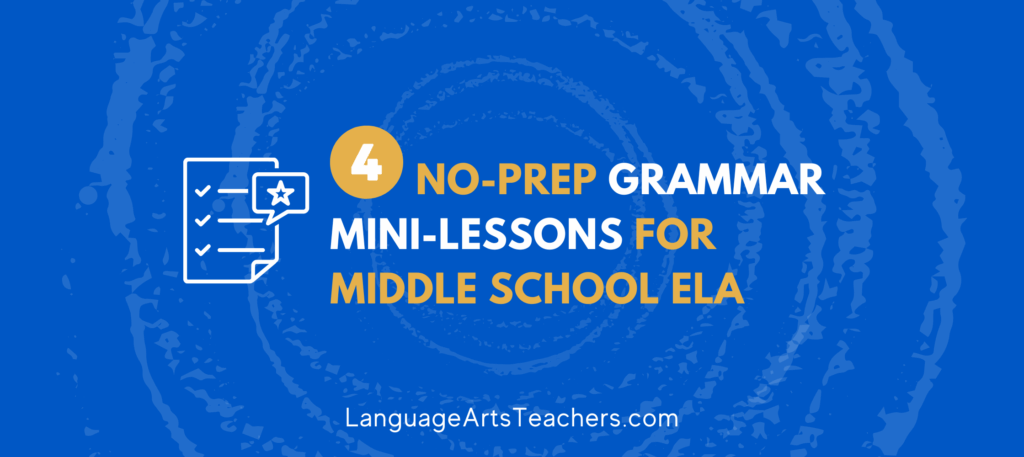When we think about what to teach during that very first week of school, it’s not as much about the academics as it is about teaching the routines, procedures, and expectations that are crucial for a smooth-running classroom.
Mini-lessons that first week are really just the tools through which I teach such routines, procedures, and expectations.
In fact, to see how I structure my very first day of Middle School ELA, click here for the only four activities I’ll ever do.
Mini-lessons are a quick, engaging, interactive way to bridge the relationship-building moments and the much-needed academic moments during the first week of school. My top two mini-lessons are wildly successful and support both academic needs and classroom structure requirements right away. Here’s what those mini-lessons are, along with what routines, procedures, or expectations each lesson allows me to teach as well:
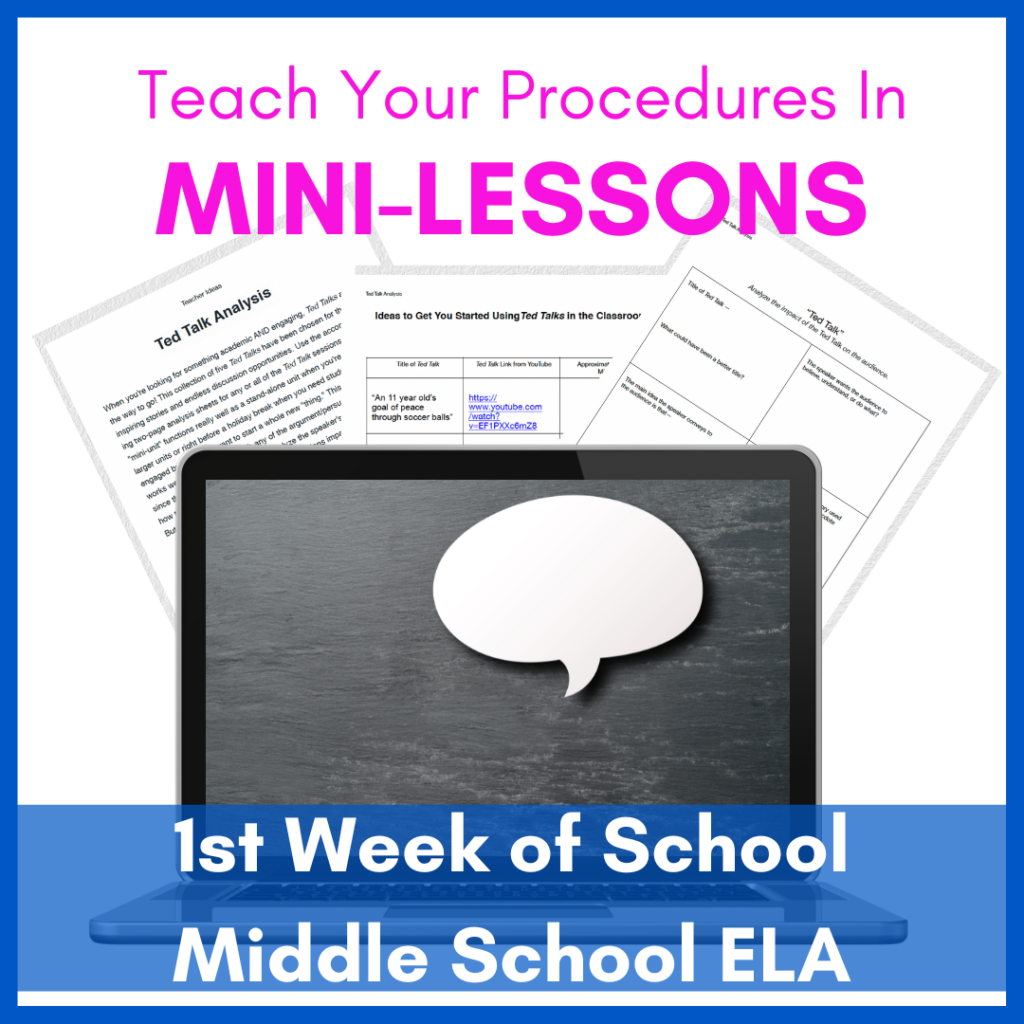
First Week Mini Lesson #1: TedTalks + Discussion
I located a collection of five TedTalks on YouTube that meet the following requirements:
- Each one runs under five minutes
- Each one is a middle school-aged student talking
- Each one is on a topic that ties in social emotional learning skills
The best part is that I don’t have all these different questions for each TedTalk (who has time for that). Instead, students respond by looking at the same types of speaking and messaging elements in each video (gestures, movement, voice inflection, vocabulary, etc).
What Students Do: Students view one of the TedTalks (not all of them) as a class. I show the TedTalk, then I show them the discussion questions. We take time to look at each question and make sure students know what the questions are actually asking of them. This avoids putting students in a situation during the very first week of school where they already feel like they don’t “get” what a question is asking. Students usually ask to view the TedTalk again since now they know what they’re looking for, based on the discussion questions. Since each TedTalk is under five minutes, I’m happy to show it again! Then, students discuss and write in either partner or small group setups. We’ll come together as a class to share ideas.
What I’m REALLY Teaching: Since I’m showing a video, this lesson is all about the procedures and expectations I have for my students anytime they are viewing a video in class. Phones are put away. Laptops or tablets are closed or turned off. Chairs are facing the main projection screen for whole-class viewing. No one gets up to throw anything away or to ask a question (the video is under five minutes, so. . .). If we need the sound to be louder, we have hand signals for that. If a student can’t hear from where they’re sitting, we have a procedure for that.
Next, during the discussion portion of the lesson, the expectations for the classroom are focused on voice volume, student participation, what discussions look like and sound like, and what happens when one group is done while others are still working. It’s time for you as a teacher to look for micro-behaviors that need to be addressed right now so they don’t turn into something more later in the year.
For the specific videos + discussion questions I personally use, I invite you to join the Middle School ELA 1st Week Lesson Plan Workshop to get ALL the resources and materials I’m talking about here!
It’s Free!
In just 15 minutes a day, for 5 days, you’ll have your ENTIRE 1st week of plans DONE along with all the lessons you’ll be using.
First Week Mini Lesson #2: Email Etiquette + Writing
Think of several hypothetical scenarios for why a student would need to email you. Assign one per student (or let them choose) so they can practice writing an example email and a non-example email about that scenario (they love getting to do the example / non-example!).
Hypothetical scenarios for why a student would email you may include:
- A question about a missing grade or incorrect grade
- Feeling upset about a project’s upcoming due date
- Wondering why makeup work grades still aren’t in the gradebook
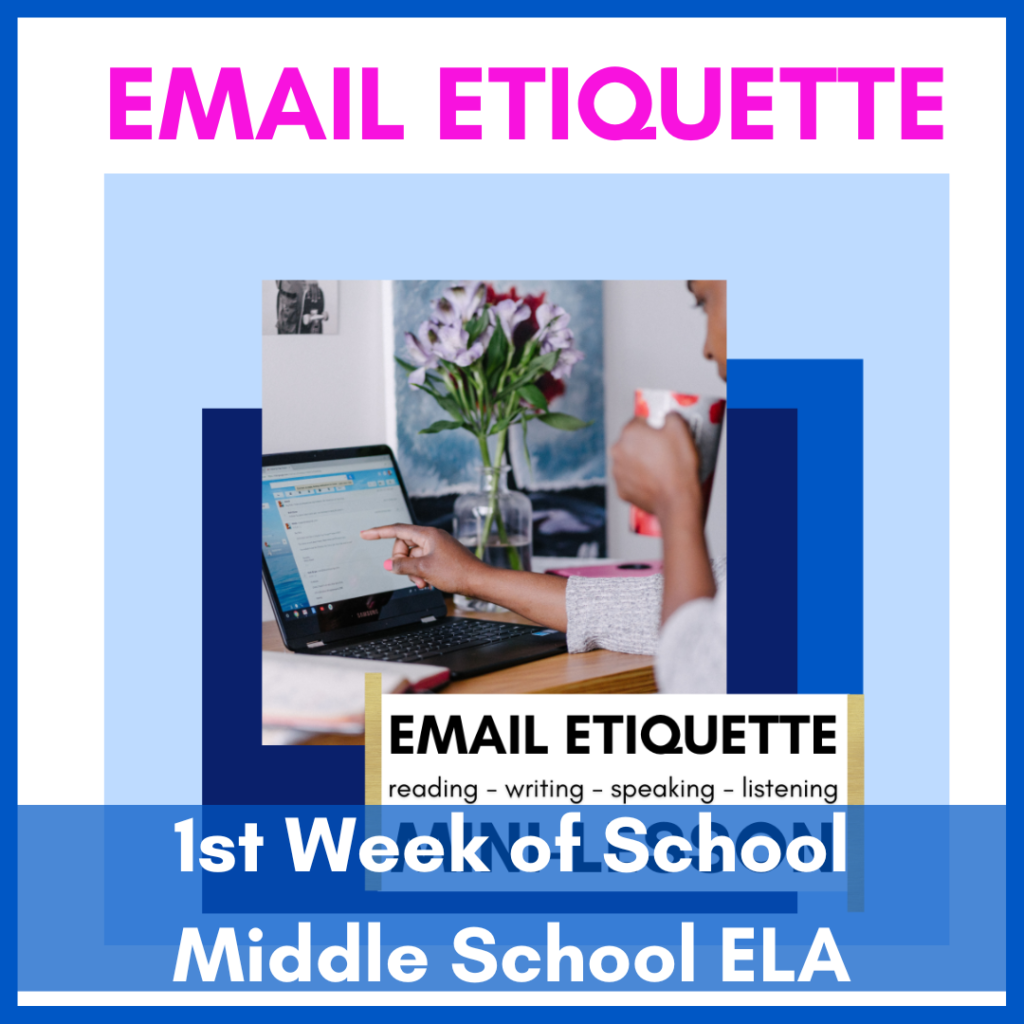
What Students Do:
This is an interactive “teach-as-we-go” mini-lesson that begins by brainstorming and discussing what the word etiquette means. If you teach in an area with a highly diverse student population (me!), then spending a few minutes sharing thoughts and experiences about etiquette in general is really helpful since we all have different notions of what that looks like in the various social constructs we live in.
From there, we move into talking about email etiquette between both teachers and students. I show an example of two (fictional) emails I wrote:
One is a respectful email where I’m checking in on a student who still hasn’t turned in an important assignment. I use his name, I ask how he’s been doing, I wonder if he needs any help or ideas, and I assume the best about him. I make myself available for questions, support, or for a safe place to work if he needs a location conducive to his project completion.
The other example is terrible (LOL) and we all have a good laugh about it. It’s an alternative email I wrote (fictional, of course) where I don’t use the student’s name, I assume the worst, and I threaten with a poor grade. I would never (and have never) written anything like that for real–it’s simply used as an example to contrast with the appropriate email I wrote already.
Next, I show an example and a non-example of (fictional) student emails to me. One email uses my name appropriately, admits a problem or an oversight on the part of the student, asks for help to remedy the situation, and wishes me a good weekend. Likewise, the next example is one that does the complete opposite with lots of bold, all-cap “yelling” tones and accusations and total disrespect along with confusing statements that we can’t understand due to a lack of proofreading or care in the message.
Again, we all laugh! It’s fun, but it also makes for some really great discussion.
Next, I present students with a series of possible scenarios for why they may need to email me. I allow them to choose one of the topics or to suggest their own topic. Time is provided for them to write two versions of that email: An example and a non-example.
What I’m Really Teaching:
I’m able to teach the academics of a basic correspondence email that takes us from the introduction (salutation), through the actual content of the email (staying on topic), and finishing with the call-to-action at the end.
It’s a real-life, real-world way to teach writing, but it’s also a method for me to discuss with my students what etiquette should look like and sound like in my classroom (or in my email inbox). It’s also a way for me to show them that I have total respect for them, and that how I show them respect is also how I expect them to show it to me and to each other in return.
The best part about this lesson is that right away, students want to share their example and non-example emails with me and with each other. They’re already enjoying the writing process, and they’re excited and confident about this first writing assignment. I don’t spend too much time on lots of grammar or mechanics here. Instead, we work on spelling, sentence structure, and grammar as it pertains to the meaning of the email. In other words, we only focus on the parts that aren’t clear due to those issues. What matters is the content of the email and the format. We’ll get to the other writing issues later. For now, it’s still the first week of school.
For the specific Email Etiquette Mini-Lesson I personally use, I invite you to join the Middle School ELA 1st Week Lesson Plan Workshop to get ALL the resources and materials I’m talking about here!
It’s Free!
In just 15 minutes a day, for 5 days, you’ll have your ENTIRE 1st week of plans DONE along with all the lessons you’ll be using.


